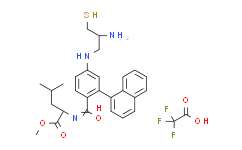
购物车0
产品总数:61470


| 商品编号 | 规格 | 价格 | 会员价 | 是否有货 | 数量 |
|---|---|---|---|---|---|
| PL10886-1mg | 1mg | ¥1446.00 | 请登录 |
|
|
| PL10886-5mg | 5mg | ¥2893.00 | 请登录 |
|
|
| PL10886-10mg | 10mg | ¥4500.00 | 请登录 |
|
|
| PL10886-25mg | 25mg | ¥8840.00 | 请登录 |
|
|
| PL10886-50mg | 50mg | ¥12054.00 | 请登录 |
|
|
| PL10886-10mM*1mLinDMSO | 10mM*1mLinDMSO | ¥3052.00 | 请登录 |
|
 扫码关注公众号
扫码关注公众号